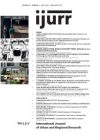The quantitative and qualitative study of consumption reveals profound inequalities between social classes. What is the situation in those sectors of consumption where the state plays an important role? An analysis of the social structure of the population living in ‘moderate rent housing’ (Habitations à loyer modéré) in the urban area of Paris goes some way towards providing the answer. The probability of benefiting from this type of state aid is higher for qualified than for unqualified workers (especíally if the latter are immigrants). Much depends, however, on the political orientations of local authorities: the political dimension of social relations has therefore some bearing on the social outcome of state intervention. The different qualities of use value of HLM housing (comfort and location) are very unevenly distributed among social classes, and that distribution reflects the segregation that is apparent throughout the housing system in the Paris urban area. It state intervention produces an overall improvement in workers’ living conditions, the way in which this improvement is achieved is still marked by deep social inequalities.
Details
Written by:
Michel Pinçon
Digital Object Identifier (DOI)
10.1111/j.1468-2427.1978.tb00750.x
About DOI
Read full article as PDF
Read full article as HTML
See the references for this article
